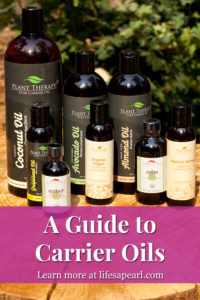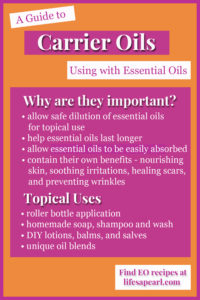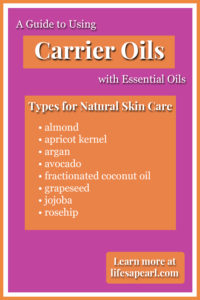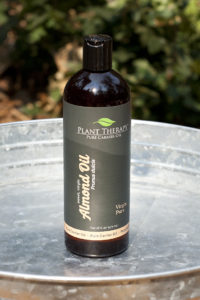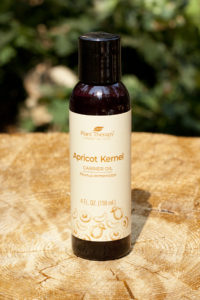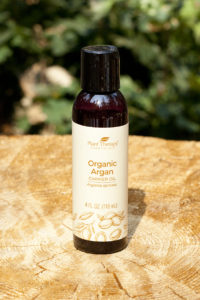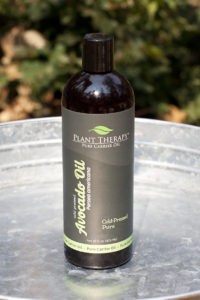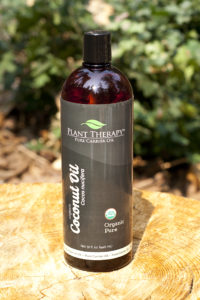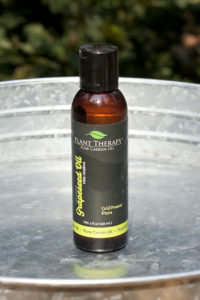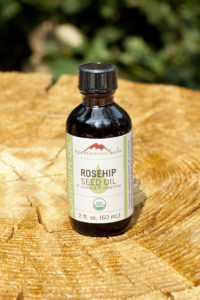Welcome to my guide to carrier oils, an important part of any essential oil practice!
When I first started out with essential oils, I was content to stick with fractionated coconut oil as my carrier oil of choice. Since upping my skin care routine with a variety of homemade personal care products, I’ve branched out into using a variety of these oils.
In this guide I explain what a carrier oil is, why they’re important, and how to use them. I’ll also cover different types of carrier oils that I use and what their specific benefits are to get the best results in your natural living regime.
What is a carrier oil?
A carrier oil is a vegetable oil made from the fatty portion of a plant. They can be expeller pressed or cold pressed from the nut, seed, or kernel of a plant. Carrier oils are rich in various fatty acids and vitamins, particularly vitamin E.
Carrier oils typically don’t have a scent or are neutral smelling. They differ in consistency and color. It is possible to blend them together in an final product for the desired effect.
Some common carrier oils include coconut oil, avocado oil, and sweet almond oil. Similar to essential oils, different carrier oils will have different strengths, benefits, and therapeutic properties. It’s important to factor in their use or function when choosing an appropriate carrier oil.

Why are carrier oils important and how are they used?
Carrier oils are an important part of using essential oils. Carrier oils are most commonly used to dilute eos before using them topically. This practice makes these powerful concentrated substances safer to apply to the skin. It lessens the chance of an allergic reaction or developing sensitivities.
How much carrier oil to use for dilution depends of the essential oils being added, the final usage of the product, and the age range of the person it’s for. For more safe dilution information check out this dilution chart from Plant Therapy.
Diluting eos with carrier oils also allows your essential oils to last longer. It helps them absorb better into skin without evaporating.
These carrier oils contain their own health and therapeutic benefits too from moisturizing and nourishing the skin to soothing irritations and bruises to healing scars and preventing wrinkles.
Proper storage
Proper Storage of carrier oils is important. Since these substances are made up of essential fatty acids, they have a shorter shelf life than essential oils. Some only have a 6 month shelf life while a few types can last 2 years.
Carrier oils should be stored in a cool, dark location. Most do best stored in the refrigerator. Jojoba is an exception to that rule
Safety concerns to keep in mind
Just like with essential oils, it’s important to make sure you’re purchasing pure high quality carrier oils from a reputable company. These will offer the best results for mixing with essential oils and give the most benefits to your body and skin.
If it is your first time using a new carrier oil, a patch test is recommended. Those with nut allergies should use carrier oils that are not derived from nuts.
Characteristics, benefits, and how I use different carrier oils:
Almond Oil
Almond oil is my go to oil for natural skin care because it’s appropriate for all skin types. It has a light consistency with little scent and absorbs easily. It’s a natural emollient, helps soften skin, and soothes dry irritated areas. Almond oil has a shelf life of 1 year.
- Almond oil is the carrier oil I use in my DIY bug spray, my homemade sunscreen, and winter hand butter.
- I use both avocado oil and almond oil in my natural belly butter.
Apricot Kernel
Apricot Kernel is another oil that’s great for all skin types. It’s gentle enough for sensitive skin and powerful enough for mature skin types. It has a very light scent, medium viscosity, and a shelf life of 1 year.
- I recently started adding apricot kernel oil to my DIY skin care recipes to be kinder to my maturing skin. I hope to have new recipes to share soon!
Argan
Argan oil is is high in vitamin E and fatty acids and known for it’s anti-aging properties and conditioning ability. While good for hair and all skin types, it’s especially helpful to those with maturing skin or skin issues. It can restore a glowing complexion and lessen the appearance of wrinkles. Argan has a light scent, thin consistency, and a shelf life of 2 years.
- Argan oil is another new one for me. I’m experimenting with it in skin care recipes as well as DIY hair care options so stay tuned!
Avocado Oil
Avocado oil is very high in several vitamins making it great for skin but it’s also one of the heaviest carrier oils. It’s deeply nourishing for dry or damaged hair and skin. A little goes a long way and often a small amount of avocado oil is blended with other carrier oils in products to give them a vitamin boost without the thickness. Avocado oil has a shelf life of 1 year.
- Avocado oil is in my face wash recipe. I’ve recently begun adding rosehip oil to this as well.
- I often use a blend of avocado oil, almond oil, and fractionated coconut oil to make up the oil part of my natural body wash.
Fractionated Coconut Oil
Fractionated coconut oil is the carrier oil most people begin with when they start using essential oils topically. It’s odorless, good for all skin types, and absorbs quickly making it ideal for use in roller bottle recipes. Fractionated coconut oil also has one of the longest shelf life of these carrier oils – 2 to 3 years.
- I use fractionated coconut oil as the base of all my roller bottle recipes from fighting seasonal allergies to helping sinus issues and easing headaches. I also have recipes to alleviate menstrual cramps, aid sleep and heal skin ailments.
- It’s the go to oil I use for my diy shampoo recipe.
Grapeseed Oil
Grapeseed oil is one of the best carrier oils for those with oily skin. It is one of the lightest carrier oils available and has mild antiseptic properties. Commonly used as massage oil, it is non-greasy and absorbs well. Grapeseed oil is odorless, light in consistency, and has a shelf life of 6 months to 1 year.
- I purchased this oil specifically to use as a massage oil before I took a topical break from my eos during pregnancy. I can’t wait to test out a recipe after the baby arrives!
Jojoba
Jojoba is actually a liquid wax rather than an oil and resembles the natural sebum of skin. It is rich in vitamin E and high in antioxidants making it great for healing and revitalizing skin. It is another one with a high shelf life – 2 to 3 years – and can even help other carrier oils last longer when blended together.
- Similar to how I most use avocado oil, I plan to blend jojoba with other carrier oils in my personal care recipes.
Rosehip
Rosehip is a great oil for dry, damaged, or aging skin. It is high in vitamin E, A, and essential fatty acids. It’s known to promote collagen growth, elasticity, and cell regeneration. Best blended with other carrier oils, rosehip has a light scent, light consistency, and a shelf life of 6 to 9 months.
- I recently began adding rosehip oil to my homemade face wash for it’s anti-aging properties. New recipes to come soon!
Further Essential Oil Resources:
Essential Oils for Natural Skin Care
A Basic Guide to Beginning with Essential Oils
Modern Essentials: The Complete Guide to the Therapeutic Use of Essential Oils
Are carrier oils a part of your natural skin care routine? What are your favorite ones to use?
